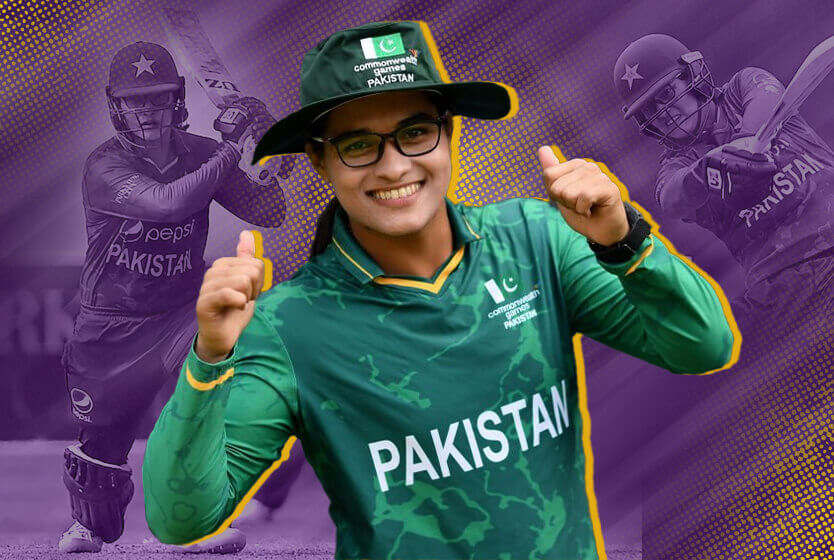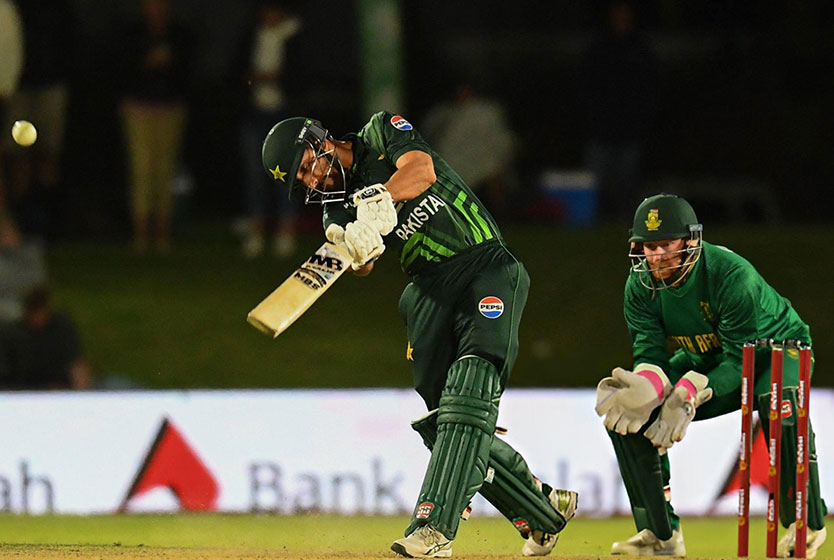
Ayesha Naseem – The Power-Hitting Revolution
The young batter has impressed for Pakistan with some sterling displays and looks to have a bright future.
When you hear about a young, revolutionary cricketer in Pakistan, you might think about Shaheen Shah Afridi, Naseem Shah, or another fast-bowler. However, the cricketer I’m referring to is a batter and a woman.
The cricketer in question is Ayesha Naseem. Power hitting in women’s cricket is as important, if not more, as it is in men’s cricket. In the Pakistan women’s cricket setup, Ayesha Naseem is a highly regarded and upcoming young power hitter.
She started her journey at the Fatima Jinnah National Women’s Championship in 2016. There, her performances were pretty ordinary. However, her performance improved in the next edition of this tournament, and in just her second List A tournament, she was striking at almost 120. She played three innings in that tournament representing Abbottabad, which paved the way forward.
Her first eye-catching performance at the international level was in the away tour of South Africa in early 2021. In her first innings for Pakistan, she came in at 60/4 in 11.1 overs and scored some quick runs in a partnership with first Kainat Imtiaz and then Nida Dar, top scoring for Pakistan with 31 off just 25 balls. In the next game, again after a top order crisis, Ayesha came in at 48/5 and played a counter-attacking innings of 33* (22).
In her next tour, she struck at 132.5 against West Indies – the only other Pakistani striking above 100 was Fatima Sana. In the history of WT20I cricket for Pakistan, only Ayesha Naseem strikes quicker than a run-a-ball (minimum 100 runs).
Highest WT20I Strike Rates for Pakistan (min. 200 runs)
| Innings | Runs | Average | Strike-Rate | |
| Ayesha Naseem | 15 | 214 | 17.8 | 116.9 |
| Nida Dar | 101 | 1343 | 16.4 | 98.9 |
| Javeria Khan | 99 | 1895 | 22.0 | 93.8 |
| Asmavia Iqbal | 54 | 421 | 10.0 | 91.7 |
| Bismah Maroof | 111 | 2388 | 27.4 | 91.1 |
| Omaima Sohail | 28 | 364 | 13.0 | 90.1 |
However, the Pakistan team may not have utilized her in an optimal manner on many occasions. Being 18 years old, she has a long way to go, lots to learn, and a whole career ahead of her. Still, Pakistan’s track record of mishandling young cricketers will remain a cause for concern.
In the first match of the Commonwealth Games, she batted at number 7 against Barbados while chasing a target of 145. Pakistan’s top order didn’t get going, taking up too many balls and leaving too much for the lower order to do. When Ayesha Naseem came to bat, the game was almost done and dusted.
Some of Ayesha Naseem’s Entry Points
| Score | Entry | Ayesha’s score | Opponent |
| 60/4 | 11.1 | 31 (25) | South Africa |
| 48/5 | 12.2 | 33 (22) | South Africa |
| 40/5 | 8.6 | 45* (33) | West Indies |
| 34/3 | 7.3 | 45* (31) | Sri Lanka |
| 50/3 | 11.1 | 10 (6) | Sri Lanka |
| 48/3 | 9.2 | 14 (17) | Ireland |
| 51/3 | 8.6 | 10 (9) | India |
This table shows Ayesha’s entry points when she has scored in double digits. Most of her innings have come when the chips were down and Pakistan were in the middle of a collapse. She managed to arrest the collapse a few times, and what was different about these innings is that she did not just go into a shell and stop playing her shots. Rather, she chose to counter-attack.
Another thing that helps Ayesha is that she is surrounded by an experienced middle order consisting of players such as Bismah Maroof or Nida Dar. This can prove helpful for a young and inexperienced batter like Ayesha to keep calm and play her natural game.
Ultimately, before being too critical, we must also remember the shortage of resource allocation for women’s cricket, which is severely lower than what it is in men’s cricket. Thus, any criticism must keep the ground realities in the picture. Players like Ayesha will continue to improve if we back them and they play as much cricket as possible. For this, changes need to be made in our current system. The women’s PSL might be a welcome change.







Leave a Reply